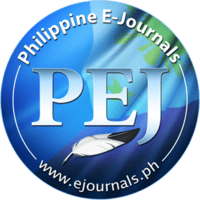Fish Drying Chamber Utilizing Salinity and Moisture Content Using ATmega328P
DOI:
https://doi.org/10.64807/93jx1k02Abstract
The fish drying chamber that uses salinity and moisture content and is controlled by an Atmega328P is a technological breakthrough representing a significant advancement in fish drying processes. The use of this chamber has the potential to revolutionize the traditional fish drying process, which is frequently inefficient and inconsistent. The goal of this technology is to ensure that fish is dried evenly and that the required moisture content and salinity levels are met to produce high-quality dried fish. A thermostat sensor monitors the chamber’s temperature, and a load cell sensor measures the weight of the fish before and after drying. The system can indirectly measure the moisture content of the fish by measuring the weight of the fish before and after drying. A salinometer is also used to regulate the salinity of the fish, ensuring consistent variations in salinity. Consistent salinity levels must be maintained during the drying process to ensure the fish is evenly dried and retains its quality. The drying process within the chamber is meticulously monitored to ensure that the fish is evenly dried and that the desired moisture content and salinity levels are met. Fish farmers and processors can use this technology to produce high-quality, evenly dried fish that meets market standards. The fish drying chamber utilizing salinity and moisture content using Atmega328P is a significant technological advancement that can improve the efficiency and consistency of fish drying processes.
Keywords:
drying chamber, salinity, moisture content, dried fish, ATMega328P microcontrollerReferences
Fitri, N., Chan, S.X.Y., Lah, N.H.C., Jam, F.A., Misnan, N.M., Kamal, N., Sarian, M.N., Lazaldin, M.A.M., Low, C.F., Hamezah, H.S., Rohani, E.R., Ghazali, H.M., & Abas, F. (2022). A Comprehensive Review on the Processing of Dried Fish and the Associated Chemical and Nutritional Changes. Foods, 11(19), 2938. https://doi.org/10.3390/foods11192938
Balami, S., Sharma, A., & Karn, R. (2019). Significance Of Nutritional Value Of Fish For Human Health. Malaysian Journal of Halal Research, 2(2), 32-34. https://doi.org/10.2478/mjhr-2019-0012
Turan, H., & Erkoyuncu, I. (2012). Salting Technology in Fish Processing. In Progress in Food Preservation (pp. 297-313). https://doi.org/10.1002/9781119962045.ch14
Fish Dryers, Fish Dryer Machine, Fish Drying Systems, Mumbai, India. (n.d.). http://www.kerone.com/fish-drying-system.php
Risa, M., Irawan, A., Pratomo, A., Khalid, A., & Fauzi, Y.R. (2022). Hybrid solar fish dryers as a solution for improving the quality of fisheries products to support green technology during the pandemic COVID-19. IOP Conference Series, 980(1), 012037. https://doi.org/10.1088/1755-1315/980/1/012037
Darvishi, H., Azadbakht, M., Rezaeiasl, A., & Farhang, A. (2013). Drying characteristics of sardine fish dried with microwave heating. Journal of the Saudi Society of Agricultural Sciences, 12(2), 121-127. https://doi.org/10.1016/j.jssas.2012.09.002
Adedeji, A.E., Olalusi, A.P., Olayanju, T., & Erinle, O.C. (2020). Effect of Drying Parameters on the Physical Properties of Extruded Fish Feed. IOP Conference Series, 445(1), 012011. https://doi.org/10.1088/1755-1315/445/1/012011
Mansur, M.A., Rahman, S., Khan, M.N.A., & Uga, S. (2013). Study on the quality and safety aspect of three sun-dried fish. ResearchGate. https://www.researchgate.net/publication/316594985_Study_on_the_quality_and_safety_aspect_of_three_sun-dried_fish
Dewi, F.R., & Widiyanto, A. (2021). Dried fish in Indonesia: Problems and a Possible Solution, a Review. IOP Conference Series, 934(1), 012082. https://doi.org/10.1088/1755-1315/934/1/012082
Belton, B., Johnson, D.R., Thrift, E., Olsen, J., Hossain, M.A.R., & Thilsted, S.H. (2022). Dried fish at the intersection of food science, economy, and culture: A global survey. Fish and Fisheries, 23(4), 941-962. https://doi.org/10.1111/faf.12664
Mithun, B., Hoque, M.S., Van Brakel, M.L., Hasan, M.M., Akter, S., & Islam, M.A. (2021). Comparative quality assessment of traditional vs. improved dried Bombay duck (Harpodon nehereus) under different storage conditions: Solar chimney dryer a low-cost improved approach for nutritional dried fish. Food Science and Nutrition, 9(12), 6794-6805. https://doi.org/10.1002/fsn3.2631
Rasul, M.G.R., Yuan, C.Y., Yu, K.Y., & Tataki, K.T. (2021). Factors influencing the nutritional composition, quality and safety of dried fishery products. Food Research. https://www.myfoodresearch.com/uploads/8/4/8/5/84855864/fr-2021-730.pdf
J, O., Ugoala, E., & Ibitoye, A. (2009). Study of Fish Weight Loss in Solar Dryer Across Different Agro-Ecological Zones of Nigeria. Nature Precedings. https://doi.org/10.1038/npre.2009.3018.1
Sulieman, A.M.E. (n.d.). Quality Characteristics of Dried Fish Obtained From Eldeim Area, Central Sudan. Scientific & Academic Publishing. http://article.sapub.org/10.5923j.food.20120201.01.html
Kamaruddin, S.B.A., Jalil, E.E.A., Nasir, N.A.A.M., Zakarya, I.A., & Rozar, N.M. (2022). Hygienic and Timeliness of Salted Dried Fish Process Using Smart Portable Outdoor Domestic Solar Drying Cabinet (PODSOD). Food Science and Technology, 10(2), 34-53. https://doi.org/10.13189/fst.2022.100203
Joel, O.O. (2019, January 16). Design, Construction, and Simulation of a Solar Fish Dryer. International Journal of Trend in Scientific Research and Development. https://www.ijtsrd.com/engineering/mechanical-engineering/20299/design-construction-and-simulation-of-a-solar-fish-dryer/sule-salisu
Downloads
Published
Issue
Section
License
Copyright (c) 2025 QCU The Star

This work is licensed under a Creative Commons Attribution 4.0 International License.
All articles published in QCU Journals are made available under the Creative Commons Attribution 4.0 International License (CC BY 4.0).
This license allows for:
- Sharing – copying and redistributing the material in any medium or format.
- Adapting – remixing, transforming, and building upon the material for any purpose, including commercial use.





